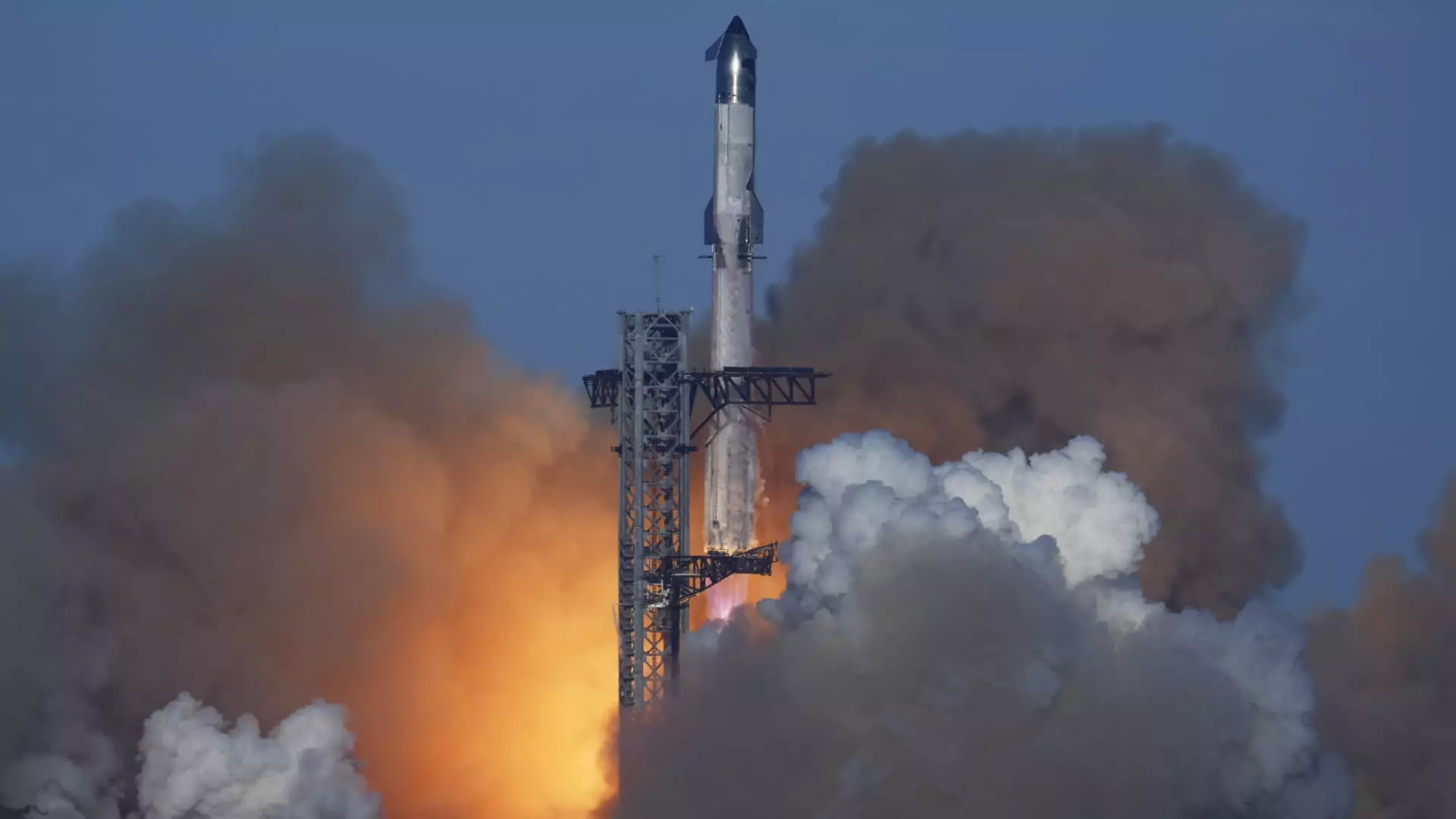The recent incident involving SpaceX’s highly anticipated Starship rocket has placed the aerospace company in a precarious position. The Federal Aviation Administration (FAA) announced a grounding of the rocket until an extensive investigation into its midflight failure is conducted. This situation has not only disrupted SpaceX’s operational timeline but has also had ripple effects throughout the aviation industry, with numerous commercial flights being diverted as a precautionary measure. The incident raises critical questions about the safety protocols surrounding space missions and the regulatory oversight that must accompany innovative aerospace endeavors.
While the FAA confirmed that there were “no reports of public injury,” it did acknowledge incidents of property damage occurring in the Turks and Caicos islands, a direct consequence of the debris that fell during the Starship’s explosion. Such occurrences underscore the potential disturbances that spaceflight activities can cause to nearby land and communities. For a company that prides itself on pioneering space exploration, the need to address public safety and environmental impact must be paramount. SpaceX’s assertion that debris fell within pre-established hazard areas does little to mitigate the concerns raised by the FAA’s announcement of a “Debris Response Area.” This illustrates a significant disconnect between the company’s assessments and the regulators’ findings.
Operational Disruptions for Airlines
The midflight failure of Starship had immediate repercussions for commercial airlines such as American Airlines, JetBlue, and Delta which were forced to divert their flights to avoid potential hazards. This incident serves as a stark reminder of the interconnectedness of aerospace and commercial air travel industries. The diversion and subsequent delays not only inconvenience passengers but may also lead to increased operational costs for the airlines. The FAA’s role in ensuring the safe coexistence of space and air transportation intensifies as commercial space flights become more common.
The mandated investigation can be seen as both a setback and an opportunity for SpaceX. While the company must navigate the complexities of regulatory compliance and safety assurance, it also has the chance to refine its technology and protocols. Moving forward, the FAA has made it clear that a new launch license will only be granted once the investigation is completed and all necessary corrective measures are implemented. The scrutiny surrounding SpaceX’s operations may influence their future missions and necessitate an adaptation of their strategies to ensure safety and compliance with regulatory standards.
The grounding of SpaceX’s Starship serves as a reminder of the thin line between innovation and public safety that aerospace companies must tread. As space companies continue to push the boundaries of technological advancement, regulators like the FAA must remain vigilant to safeguard public interest. For SpaceX, this incident could be a pivotal moment—not just in terms of immediate operational capabilities, but in how it navigates the regulatory landscape in the future. In doing so, it sets a precedent for other aerospace ventures that aspire to break into the frontier of commercial space travel.

